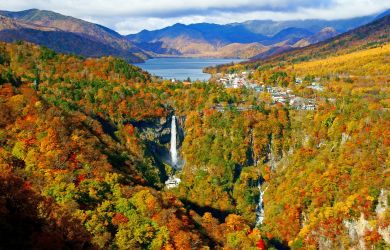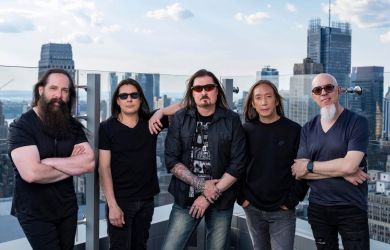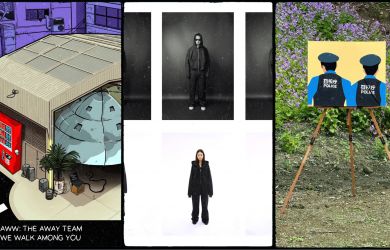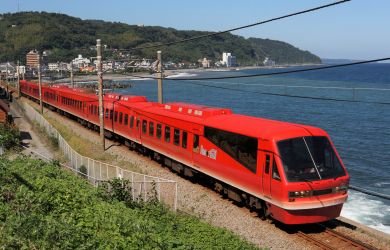
Originally published on metropolis.co.jp on April 2012

The three commonly quoted impediments to tourism in Japan are said to be: Fukushima, the high yen and language. Do you agree and what order would you put them in? And what is the JTA doing to ease these?
Personally, I think the first reason would be the Fukushima radiation problem, the second the strong yen, and the third would be the language. In terms of the language, the Japan Tourism Agency is co-operating with regional departments to prepare things such as multi-language signs and access to interpreters. I believe we are reducing the language barrier as the progress goes on. The radiation problem is the biggest of all three and, in addition, there are rumors going around which influence the public.
We have been announcing accurate information to the public and invited the media and tourist agencies. We’ve also used blogs, Twitter and Facebook to spread information through the grapevine. However, if we really want to rebuild the community, we need to strengthen the actions that we are taking.
Recently JTA launched a “Japan. Thank You” campaign. While it may create goodwill for Japan, it’s hard to see how it will increase tourism. What is the thinking behind this campaign?
To promote tourism to the public, it is essential to show that the relief work after the disaster was done properly. Tourism and revival is like the two front wheels of a car. Many countries around the world came and helped us rebuild the community. Having the role to invite foreigners to come to Japan for tourism, we mean to show our gratitude. Personally, after the 9/11 attacks, the mayor and the people of New York showed their thankfulness in many ways—and I was one of the many whose heart was touched by seeing them. If we have this attitude, I believe it will promote tourism for Japan.
It’s noticeable that Chinese tourists are increasing again in number, while the number of tourists from other nations is still low. Why is this?
Not just from China. Tourism from places like Taiwan, Hong Kong and Thailand has recovered pretty quickly. The number of tourists from America and the U.K has returned to the same as before the disaster. The rumors are not fully cleared but with the Chinese tourists, one of the reasons is the ease of [obtaining] personal tourist visas. Also, we’ve been promoting heavily in China and the fact that the economy there has been rapidly growing is allowing the market to expand.
When I read foreign blogs, I always see talk about the radiation problem. I don’t read Chinese but is the issue treated differently in China?
With China being geographically close and with many Chinese people living in Japan, I believe the amount of information being shared is quite large. This year marks the 40th year of Japan-China diplomatic relations, and because of that there has been a lot of recent cultural exchanges.
So it is about the availability of the information…
There is a lot of information available through cross-border relations. Also, many exchange students from China live in Japan. Information from those students plays a key role as well.
Foreign tourists still think that Japan is threatened by radioactivity, while those of us in Tokyo know that it is basically safe. What measures is the JTA taking to ensure that people understand the situation is under control?
First of all, we provide accurate information. Secondly, we continue to invite travel agencies and the media. We have also asked foreigners and exchange students to provide information. In addition, we have asked celebrities to co-operate, like Lady Gaga who I have kissed three times! Justin Bieber, Il Divo and Cindy Lauper have also helped us out. We’ve asked foreigners and exchange students in Japan to be active with blogs, Twitter and Facebook. I believe that continuing these things is an important factor.
Why doesn’t the JTA use a radiation awareness campaign that revolves around the use of social media resources—such as organizations like www.safecast.org?
When we promote tourism, we have to be flexible depending on what country we are dealing with. Social media has been a key factor but some countries prefer websites, advertisements or even face-to-face situations like exhibitions and business meetings. We believe these methods are useful, as well, and using different social channels—especially social media—is very important.
Have you heard of www.safecast.org? When foreigners do not trust the radiation information provided by the government, their web traffic dramatically increases.
I think that is an interesting and effective tool that we can apply as well in the future.
With the rise of Chinese tourists, it seems that the major attractions are shopping, food and excellent service? Are there other factors drawing them?
In 2010, a few of the reasons Chinese people frequently came to Japan was for shopping, nature and the hot springs. In order for them to become a regular visitor to Japan, we can include medical travel, sports and the traditional culture of Japan in our promotions. Also, I believe for many of the Chinese people, Tokyo and Osaka are the main destinations, so we can also promote other regions in Japan for them to visit.
So this data is from 2010, but is there a big difference now in 2012?
Many of the Chinese tourists are first time visitors, but tourists from Korea, Taiwan and Hong Kong have visited before. As we get more regular visitors from these areas, in the next two or three years I think that Japanese culture and tradition will become a big attraction for them. For example, visitors from Europe or America who are interested in traditions like sumo often come back to Japan. Also, Western people tend to have more experience traveling, so they know how to enjoy traveling overseas. Those people are our main customers but with the Chinese tourists, they’ve just started to travel. I think they’ll gradually get closer to how Western people travel.
What impact on tourism do you expect from the new low cost airlines (LCCs) that will be flying in to Japan?
The LCCs are already going ahead with Air Asia and JetStar. The impression of Japan is that it is expensive, but with more LCCs coming our way I think we will have a better image and more influence to inbound travelers. In the future, we are planning to co-operate with the LCCs so that we can expand our market.
One major obstacle with one-time foreign tourists to Japan is that they typically travel the Tokyo-Osaka-Kyoto route. What is the plan, if any, to get them to travel to other regional areas?
As I said before, it is necessary for tourist to return to achieve our goal of 30 million visitors. Now that Haneda airport is flying internationally, having two main airports will expand the networks with other regional airports. Using those networks, we can promote regional attractions in Japan, alongside their regional governments. Places like Hokkaido, Okinawa, Osaka and Kyoto have had great results from that [type of promotion].
What are your personal favorite destinations in Japan?
The first one would be Hokkaido where you can feel the four seasons. The natural scenery is phenomenal and I personally believe it can outdo the Alps. Also, the food there can be compared with the world’s best. The second one is Tokyo—a lot of its potential is still hidden. Tokyo is full of tourist attractions but it’s been focusing on the business scene up until now. If more focus is put on tourism, I think it will become the largest tourist destination in Asia. Third would be Kyoto. You can feel the tradition and history of Japan there. Finally, the fourth place would be places like the Noto peninsula in Ishikawa Prefecture, where you can enjoy the natural hot springs and the season’s beauty yourself. If I were told that I was going to die in four days, I would definitely want to go to these four places.





